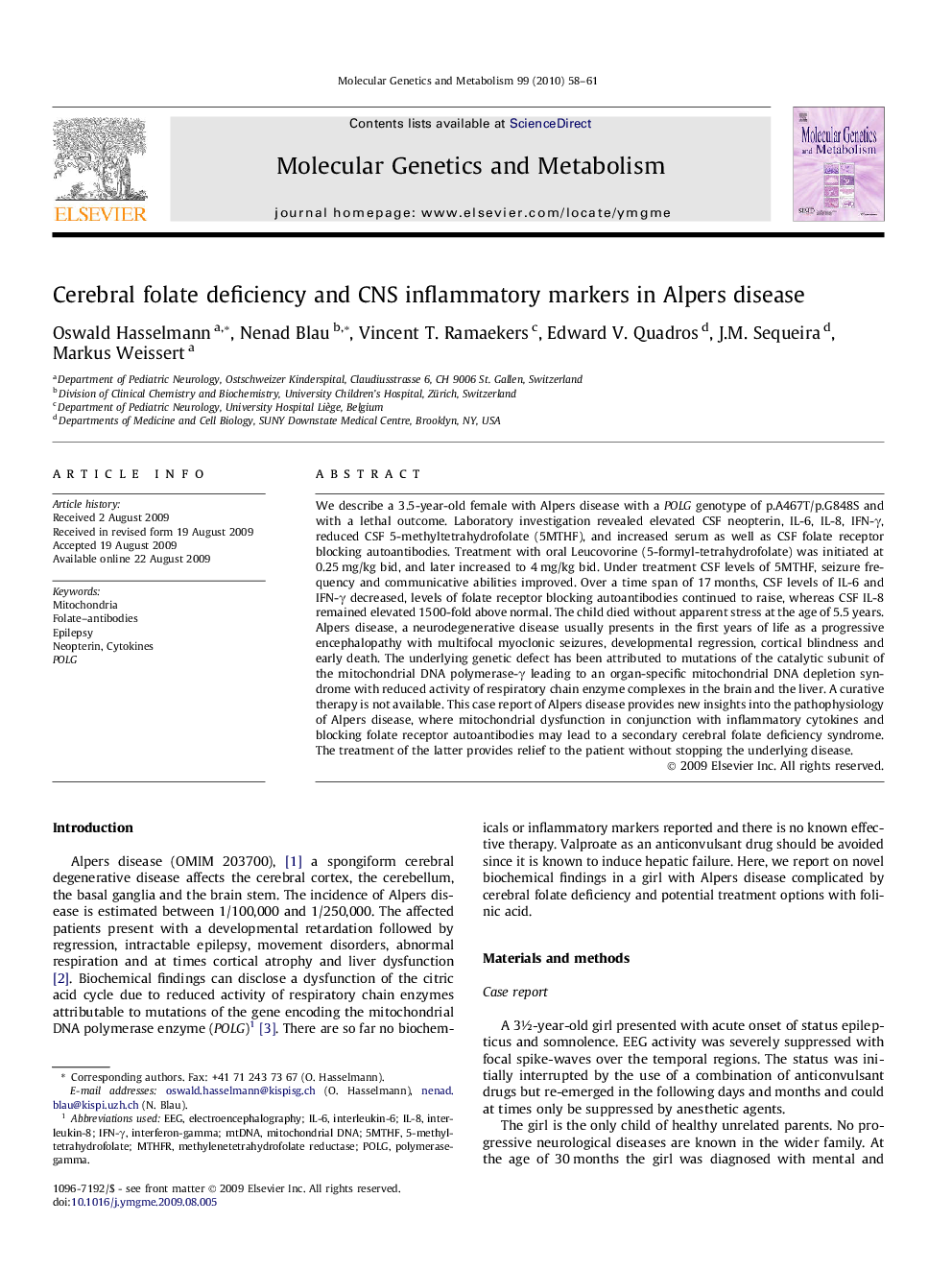| Article ID | Journal | Published Year | Pages | File Type |
|---|---|---|---|---|
| 1998586 | Molecular Genetics and Metabolism | 2010 | 4 Pages |
We describe a 3.5-year-old female with Alpers disease with a POLG genotype of p.A467T/p.G848S and with a lethal outcome. Laboratory investigation revealed elevated CSF neopterin, IL-6, IL-8, IFN-γ, reduced CSF 5-methyltetrahydrofolate (5MTHF), and increased serum as well as CSF folate receptor blocking autoantibodies. Treatment with oral Leucovorine (5-formyl-tetrahydrofolate) was initiated at 0.25 mg/kg bid, and later increased to 4 mg/kg bid. Under treatment CSF levels of 5MTHF, seizure frequency and communicative abilities improved. Over a time span of 17 months, CSF levels of IL-6 and IFN-γ decreased, levels of folate receptor blocking autoantibodies continued to raise, whereas CSF IL-8 remained elevated 1500-fold above normal. The child died without apparent stress at the age of 5.5 years. Alpers disease, a neurodegenerative disease usually presents in the first years of life as a progressive encephalopathy with multifocal myoclonic seizures, developmental regression, cortical blindness and early death. The underlying genetic defect has been attributed to mutations of the catalytic subunit of the mitochondrial DNA polymerase-γ leading to an organ-specific mitochondrial DNA depletion syndrome with reduced activity of respiratory chain enzyme complexes in the brain and the liver. A curative therapy is not available. This case report of Alpers disease provides new insights into the pathophysiology of Alpers disease, where mitochondrial dysfunction in conjunction with inflammatory cytokines and blocking folate receptor autoantibodies may lead to a secondary cerebral folate deficiency syndrome. The treatment of the latter provides relief to the patient without stopping the underlying disease.
